Related Research Articles
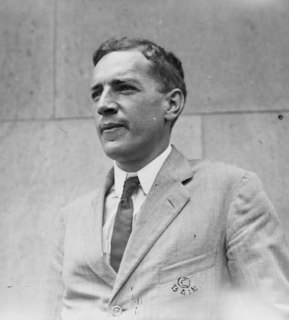
Upton Beall Sinclair Jr. was an American writer who wrote nearly 100 books and other works in several genres. Sinclair's work was well known and popular in the first half of the 20th century, and he won the Pulitzer Prize for Fiction in 1943.

USS Massachusetts (BB-2) is an Indiana-class battleship and the second United States Navy ship comparable to foreign battleships of its time. Today she is a diving site off Pensacola, Florida.

USS Kearsarge (BB-5), the lead ship of her class of pre-dreadnought battleships, was a United States Navy ship, named after the sloop-of-war Kearsarge. Her keel was laid down by the Newport News Shipbuilding Company of Virginia, on 30 June 1896. She was launched on 24 March 1898, sponsored by Mrs. Elizabeth Winslow, the wife of Rear Admiral Herbert Winslow, and commissioned on 20 February 1900.

William Dean Howells was an American realist novelist, literary critic, and playwright, nicknamed "The Dean of American Letters". He was particularly known for his tenure as editor of The Atlantic Monthly, as well as for his own prolific writings, including the Christmas story "Christmas Every Day" and the novels The Rise of Silas Lapham and A Traveler from Altruria.

Mary Johnston was an American novelist and women's rights advocate from Virginia. She was one of America's best selling authors during her writing career and had three silent films adapted from her novels. Johnston was also an active member of the Equal Suffrage League of Virginia, using her writing skills and notability to draw attention to the cause of women's suffrage in Virginia.
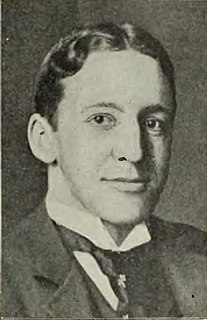
Henry Dwight Sedgwick III was an American lawyer and author.
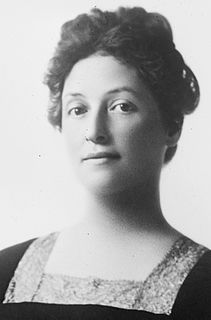
Josephine Preston Peabody was an American poet and dramatist.

USS Bagley was a torpedo boat in service with the US Navy between 1898 and 1919, named after Ensign Worth Bagley.

William Stanley Beaumont Braithwaite was an African American writer, poet, literary critic, anthologist, and publisher.

Mary Tappan Wright (1851–1916) was an American novelist and short story writer best known for her acute characterizations and depictions of academic life. She was the wife of classical scholar John Henry Wright and the mother of legal scholar and utopian novelist Austin Tappan Wright and geographer John Kirtland Wright.

Lilian Whiting was an American journalist, editor, and author of poetry and short stories. Her father was Illinois State Senator Lorenzo D. Whiting. She served as literary editor of the Boston Evening Traveller (1880–1890), editor-in-chief of the Boston Budget (1890–93), and afterward, spent much of her time in Europe. Whiting was the author of The World Beautiful, From Dreamland Sent, a book of poems, A Study of the Life and Poetry of Elizabeth Barrett Browning, A Record of Kate Field, The World Beautiful in Books, Boston Days, Florence of Landor, The Outlook Beautiful, Italy, the Magic Land, Paris the Beautiful, and others.

Edward Payson Evans was an American scholar and linguist.
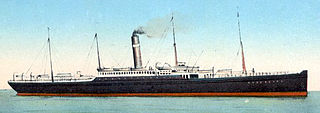
SS Merion was an ocean liner built in 1902 for the American Line, a subsidiary line of the International Mercantile Marine (IMM). She also sailed for the Red Star Line and the Dominion Line—both subsidiary lines of IMM—during her passenger career. After the outbreak of World War I she was bought by the British Admiralty and converted to serve as a decoy resembling the Royal Navy battlecruiser HMS Tiger. In May 1915, while posing as Tiger in the Aegean Sea, Merion was sunk by the German submarine SM UB-8.

The Thomas Corwin was a United States Revenue Cutter and subsequently a merchant vessel. These two very different roles both centered on Alaska and the Bering Sea. In 1912, Frank Willard Kimball wrote: "The Corwin has probably had a more varied and interesting career than any other vessel which plies the Alaskan waters."
Theodore Arnold Haultain (1857–1941) was a British writer.
Josephine Wright Chapman (1867–1943) was an American architect in Boston, Massachusetts, and New York. Chapman received no formal education or encouragement from her family to pursue architecture. She is considered one of the most important female architects around the start of the 20th century.
Katharine Elizabeth Fullerton Gerould was an American writer and essayist.
Dr. Breen's Practice is a novel, one of the earlier works by American author and literary critic William Dean Howells. Houghton Mifflin originally published the novel in 1881 in both Boston and New York. Howells wrote in the realist style, creating a faithful representation of the commonplace, and in this case describing everyday mannerisms that embody the daily lives of middle-class people.

Charlotte Endymion Porter was an American poet, translator, and literary critic and the cofounder and coeditor of the journal Poet Lore. As the editor or coeditor of editions of the complete works of William Shakespeare, Robert Browning, and Elizabeth Barrett Browning, and as a translator of major writers from around the world for Poet Lore, she was influential in shaping the American literary taste of her day.
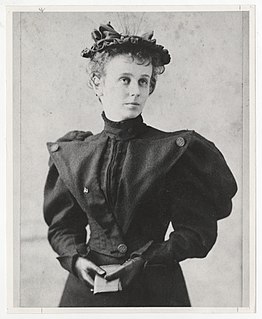
Jeannette Augustus Marks was an American professor at Mount Holyoke College.
References
- ↑ Sarah Orne Jewett, The Atlantic Monthly, 1903, p. 12
- 1 2 3 4 5 6 Leonard, John William, ed. (1914), Woman's Who's Who of America: A Biographical Dictionary of Contemporary Women of the United States and Canada, 1914-1915, New York: American Commonwealth Company, p. 74.
- ↑ With information from brief biography (The New York Times, 30 Nov. 1901, p. BR13) and obituary ("Deaconess Anna Barbour: Author of 'That Mainwaring Affair,' a Best Seller of 1900," The New York Times, 16 May 1941, p. 23).